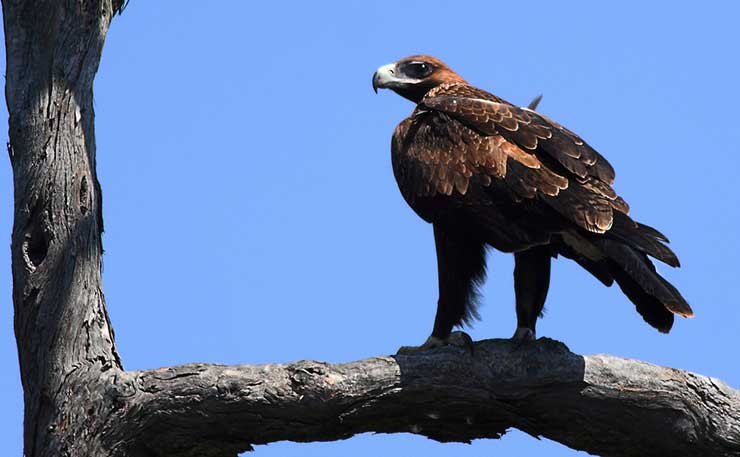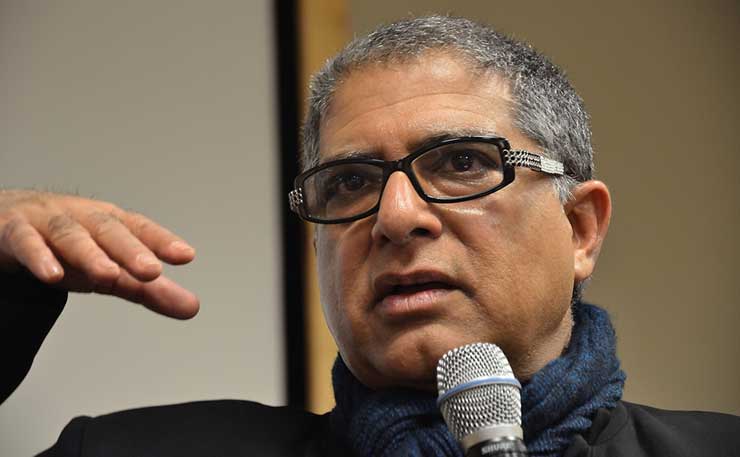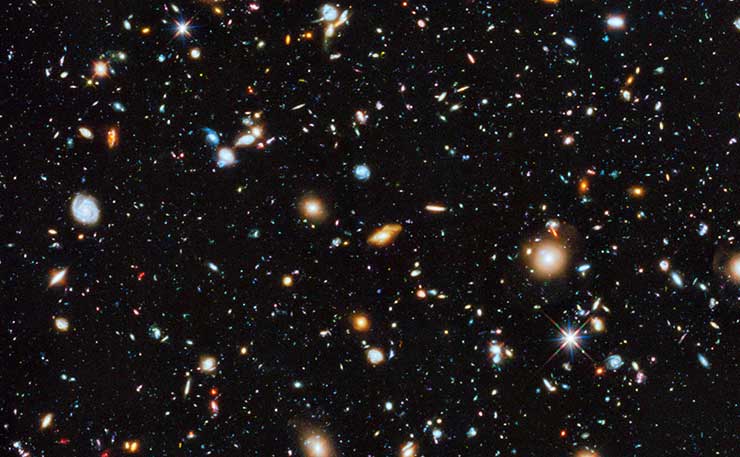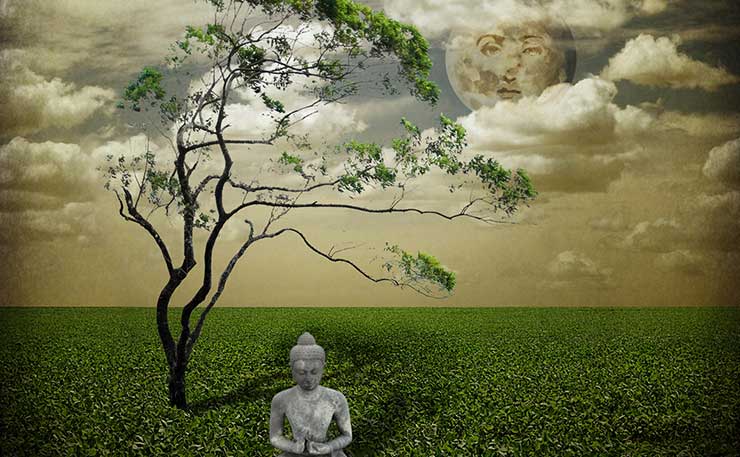Science is not actually meant to be a smorgasbord from which you pick and choose the bits that fit your pre-conceived notions. Brian Morris takes aim at the ‘Spiritual But Not Religious’ mantra.
The dust has not settled on this year’s disastrous Census yet, already, there are calls to amend the question on Religious Affiliation. While the latest change brought Australia inline with most Western countries – by placing ‘No Religion’ as first option – elements of the “not-quite-religious” community feel bitterly aggrieved.
“Spiritual But Not Religious” (SBNR) is a spin-off from the 1970s New Age Movement which, according to one source, is difficult to define and subject to the vagaries of eclecticism. And SBNR is even harder to categorise, yet proponents believe it deserves a separate religious listing in each census. Devotees point to the growth in “Spirituality and New Age Churches and Meet Ups” – more than 150 around Sydney alone.
The current and most prominent SBNR advocate is noted social commentator Hugh Mackay. His new book, “Beyond Belief” is the latest flag-bearer for spirituality – and that raises several questions.
The term “spirituality” is an amorphous concept. It gives a divinely-inspired perception of attempting to gently grasp in both hands a passing plume of purple smoke – the vapour wafting softly between one’s fingers, never to be firmly held.
Mackay’s book ranges through a panoply of spiritual interpretations – through limitless levels of consciousness, and employing the personal experiences of hand-picked story-tellers in an attempt to nail what it all means. In the final analysis one is still left pawing perplexingly at the proverbial plume of purple smoke.
Hugh might well have used my own “spiritual” experience, but as an atheist, my interpretation was never likely to mesh with an SBNR congregation.

I’d moved to the NSW North Coast for a 1980s “Sea Change” and initially rented a remote farmhouse West of Coffs Harbour. Driving home at dusk one day, on the deserted dusty track leading to the farmhouse, I saw a large wedge-tailed eagle perched on a fence post. Easing out of the car, and edging slowly towards the majestic bird, I felt that four meters (roughly) was as close as I’d get.
I stood transfixed as we stared at each other for an eternal two or three minutes – a riveting and vividly freeze-framed moment in time. Finally, the eagle gradually leaned forward and, in ultra-slow motion, spread her enormous wings and gently rode the breeze out over the valley, and away.
It was a stunningly dramatic encounter and one that is all-too-easily characterised – by SBNR enthusiasts – as a moving “spiritual experience”.
But, as an atheist, I saw it as an intensely gratifying and exhilarating moment that focused exclusively on one solitary aspect of the natural world – just man and beast, as it were. It was a rare, almost primal encounter, but in no way a “spiritual” or “communion-with-God” revelation that SBNR devotees would infer.
And this is the problem of superimposing the supernatural on nature. Spirituality – and the fusion of SBNR and New Age – leaves the door wide open for the plethora of other paranormal beliefs which have no basis in evidence or reason. They include astrology, numerology, reiki, homeopathy, crystals, feng-shui, ghosts, psychics, clairvoyance and creationism, among many others. All pseudo-sciences and other forms of “woo” are listed here. Understanding the psychology of avoiding gullibility – and having a healthy level of scientific literacy – are the best defenses against pseudo-scientific beliefs.
There is no question that becoming self-aware is important – knowing at least something about the functions of one’s body and brain (our “mind” is merely a brain function). It’s useful, too, to understand one’s emotions and how we view the natural world we inhabit. All are intriguing areas for reflection and introspection.
But it’s so easy to exaggerate life’s “mysteries”, to yearn for “something greater than ourselves in the universe”, and to become obsessed with the notion of “spirit” – with its religious embrace of “dualism” and the fallacy of an “eternal soul”. It can all be driven, quite understandably, by existential angst. Coming to terms with that issue is far more likely to be a valuable life-lesson than losing oneself in an endless maze of woo woo and gurus.
An example of how the unwary are drawn into cosmic mysticism is shown by the techniques of Deepak Chopra, an internationally recognised exponent of spirituality’s pseudo-scientific psycho-babble. It is dramatically demonstrated in this discussion with science historian Michael Shermer and neuroscientist Sam Harris.

A veritable mountain of spiritual books – and a phalanx of gurus – make extravagant claims about their own particular pathway to cosmic “enlightenment”. Most appear harmless but there is a long history of spiritual cults across many continents that have wrecked the lives of millions.
This Vimeo documentary presents a graphic picture of just how easy it is for ordinary and intelligent people to be manipulated by spiritual groups that offer a “profound meaning and purpose” to one’s life.
Spirituality itself is a by-product of religion and if, as claimed, it transcends reality then by any definition it is “paranormal”. Many who may seem genuinely spiritual are more likely to be deists – belief in a god of the universe that (for reasons unknown) doesn’t require worship, doesn’t answer prayers, and doesn’t intervene in any way in human activity or the natural world. But it is supernatural nonetheless.
And it seems clear that the remainder who embrace SBNR are those left marooned on the isolated atolls of their childhood religion – that which is left once the myth and fabrication of each man-made religion has been eroded by science, forensic evidence, and critical examination.
Clutching at some ill-defined ethereal meaning of life is merely a vestige of Christianity’s “God of the Gaps” fallacy – that which cannot be explained must surely be “God’s work”. Or, to an SBNR enthusiast, simply the “unanswerable mysteries” of a spiritual realm.
Science has progressively rolled back all the Bible’s primitive explanations of the natural world – no flat Earth, no Earth-centred universe, no Noah’s flood, no miracles.
And science has unraveled far more. We have universal laws explaining Einstein’s General Relativity, Hubble’s Cosmic Expansion, Kepler’s Planetary Motion, Newton’s Gravitation. There’s thermodynamics, evolution, electro-magnetic propagation and quantum physics. All religions are left with just supernatural beliefs created by illiterate men whose provenance is demonstrably questionable. And that leaves SBNR isolated too.
Professor of Philosophy, Massimo Pigliucci, studies the relationship between philosophy, science and religion. His article on SBNR, in Psychology Today, points to the confusion it causes, due to the impossibility of finding a clear definition of SBNR – and he explains why that is. Spirituality and religion has meant all things to all people since the dawn of time. But Pigliucci argues that we don’t require any form of supernatural intervention to live happy, ethical, and productive lives that provide compassion, cooperation and tolerance towards all others.

But it’s entirely understandable that our distant ancestors – over the past 200,000 years – developed wildly different concepts of spirituality. With absolutely no knowledge of science, what else could they infer from the terrifying experiences of earthquakes, a solar eclipse or thunder and lightening? It’s no surprise that so many cultures came to believe that those “angry gods” could only be appeased by blood sacrifice. Even today, Catholics perpetuate a primitive spiritual ritual with the communal “body and blood” of Christ.
It’s long overdue that we break this genetic link with our god-fearing forebears. It has been a recurring theme, with each successive civilisation inventing their own gods and spirits – paranormal beliefs to deal with the “real” world, or to seek solace in some kind of afterlife to offset their fear of death. And that fear of death grips the quasi-religious too – succinctly explained in the book “The Worm at the Core“; dealing rationally with death.
But while we now possess the power and knowledge of science, humans remain inherently irrational – prone to error, falsehood and fantasy. It’s why people with religious beliefs – especially those “spiritually indoctrinated” at a young age – have a vast array of religious defence mechanisms to protect and even enhance their beliefs.
It is why the Scientific Method (SM) was finally developed in the 18th century – the techniques necessary to tenaciously avoid confirmation bias, expectancy effect, subjective validation and fifty other cognitive biases. All are tests which expose the “pseudo” in all pseudo-science. The Scientific Method separates fact from fiction. And it’s why, from the Age of Reason, that logic and critical thinking has pushed back the doctrines and dogmas of organised religion, and of spiritual fallacies too!
Spirituality is the last refuge of those clinging to the remnants of religious belief – those who continue to ask; “why are we here?”, or “where do we come from?”, and “what is our place in the universe?” The WHY question is wholly redundant, akin to “why is there a mountain, or why is there wind?”
The scientific question is HOW – “how precisely did biogenesis kick-start life.” And science is on the verge of answering that essential question – together with wider discoveries that only temporarily elude us, both here on Earth and across the universe.
So it’s with great consternation – and yawning cynicism – that we continue to hear self-appointed religious hierarchies who still claim sole knowledge of life, death and the birth of the cosmos. But there’s no less incredulity for New Age pseudo-science and the spirituality movements that are based on an illusory truth about spiritual metaphysics.
To seasoned sceptics, SBNR is more critically termed “Spiritual But Not Rational“. Science, critical analysis, and healthy scepticism are the primary defenses we have against all irrational beliefs.
Donate To New Matilda
New Matilda is a small, independent media outlet. We survive through reader contributions, and never losing a lawsuit. If you got something from this article, giving something back helps us to continue speaking truth to power. Every little bit counts.





